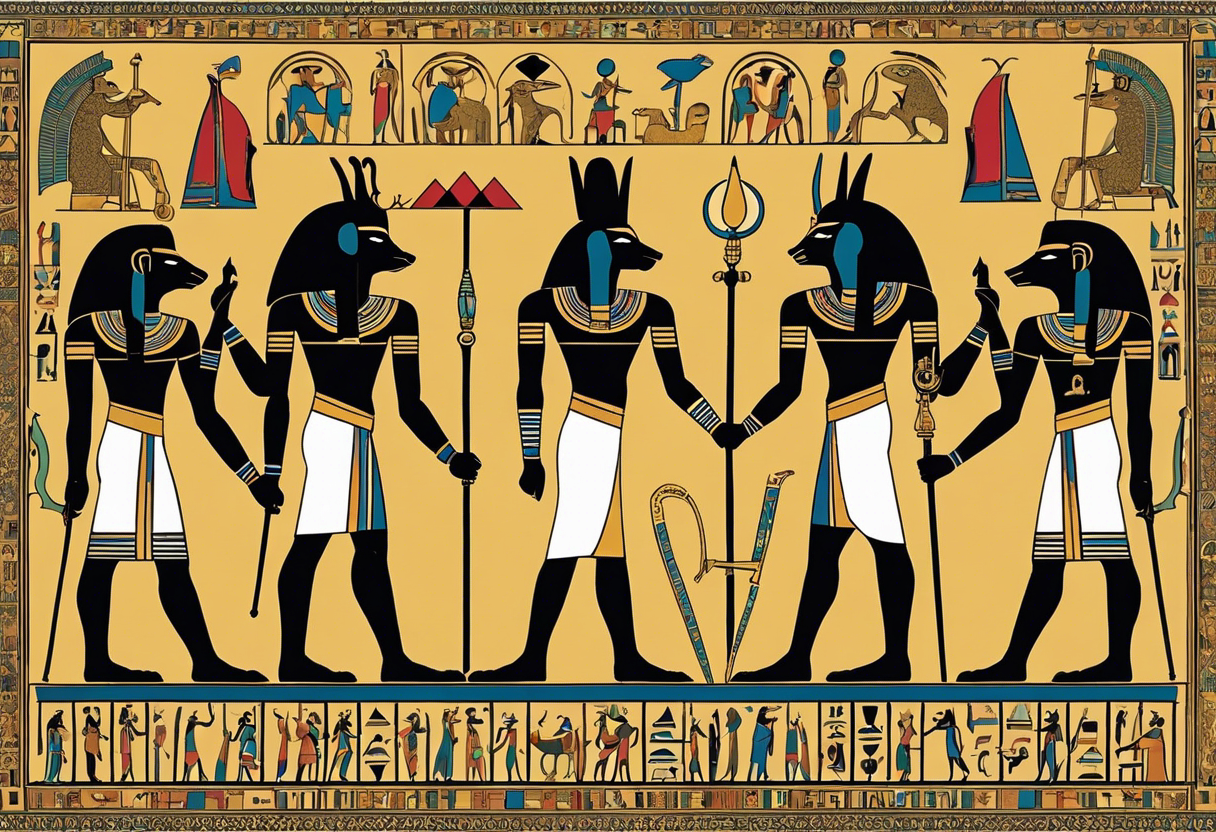Introduction to Egyptian Gods
In ancient Egypt, religion played a central role in every aspect of life. The Egyptians believed in a pantheon of gods and goddesses who controlled the forces of nature, created the world, and protected and guided their civilization. These gods were worshipped through rituals, ceremonies, and offerings.
One of the most distinctive features of Egyptian mythology is the great number of gods and goddesses that were worshipped. Each deity had their own unique characteristics, powers, and domain of influence. The Egyptian gods had both human and animal forms, and they often possessed a combination of attributes from different species.
The ancient Egyptians believed that the gods ruled over specific domains and had distinct roles in maintaining order and balance in the universe. Some of the most powerful and well-known Egyptian gods include Ra, Osiris, Isis, Horus, and Anubis.
Ra, the sun god, was one of the most important deities in the Egyptian pantheon. He was believed to be the creator of the world and the source of life. Ra was depicted as a man with the head of a falcon, wearing a sun disk on his head. He travelled across the sky during the day and journeyed through the underworld at night.
Osiris, the god of the dead, was another prominent figure in Egyptian mythology. He was the ruler of the underworld and the judge of the souls of the deceased. Osiris was often depicted as a mummified figure, symbolizing resurrection and eternal life. He was also associated with the fertility of the land.
Isis was a powerful goddess, known as the mother of the pharaohs and the protector of children. She was revered for her magical powers and her ability to heal the sick. Isis was often depicted as a woman with a throne on her head or vulture wings spread protectively over her worshippers.
Horus, the sky god, was the son of Isis and Osiris. He was often depicted as a falcon or a man with the head of a falcon. Horus was the protector of the pharaoh and the embodiment of divine kingship. He battled against the evil god Set to avenge the death of his father and restore order to the land.
Anubis, the god of embalming and the guardian of the dead, was often represented as a jackal or a man with the head of a jackal. He played a vital role in the mummification process and guided the souls of the deceased to the afterlife.
Understanding the roles and legends of these Egyptian gods provides insight into the beliefs and values of the ancient Egyptians. Their worship and reverence for these powerful deities were integral to their understanding of the world and their place within it. In the following sections, we will delve deeper into the specific roles and legends of these influential gods.
The Importance of Gods in Ancient Egypt
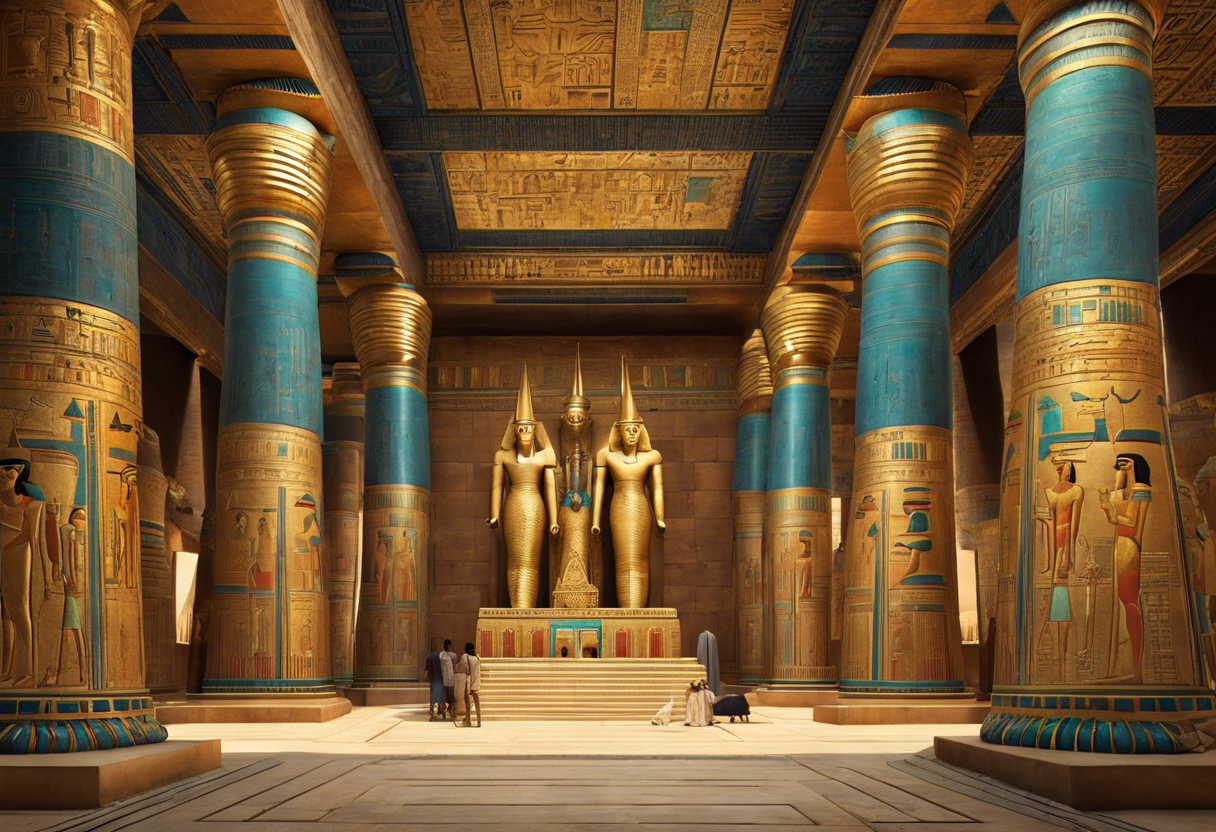
In ancient Egyptian society, gods played a central role in the daily lives of the people. They were believed to be powerful beings who controlled various aspects of the natural world and were responsible for maintaining order and balance in the universe. The Egyptians worshipped a wide array of gods, each with its own unique attributes and responsibilities. The importance of gods in ancient Egypt can be seen in various aspects of their culture and belief system.
Guardians of Ma'at
One of the primary roles of the gods in ancient Egypt was to uphold Ma'at, the concept of order and balance in the universe. The gods were seen as guardians or enforcers of Ma'at, ensuring that everything functioned harmoniously. They were believed to intervene in human affairs to maintain justice and punish wrongdoing. This belief in the gods' role as protectors of Ma'at provided a moral framework for the ancient Egyptians, influencing their behavior and shaping their society.
Intermediaries between Humans and the Divine
The gods were also seen as intermediaries between humans and the divine realm. They served as a link between the mortal world and the realm of the gods. Ancient Egyptians believed that by making offerings and prayers to the gods, they could establish a connection and seek divine favor or assistance. Temples were built as sacred spaces where people could communicate with the gods and offer their devotion. The role of the gods as intermediaries allowed the ancient Egyptians to seek guidance, blessings, and protection.
Sources of Power and Knowledge
The gods were regarded as the ultimate sources of power and knowledge in ancient Egypt. They possessed supernatural abilities and wisdom that surpassed human understanding. Various gods were associated with specific domains such as the sun, fertility, wisdom, and so on. The ancient Egyptians believed that by invoking the powers of the gods, they could harness their attributes and qualities. For instance, invoking the sun god Ra would bring light, warmth, and life-giving energy. This belief in the gods as the ultimate sources of power and knowledge gave the ancient Egyptians a sense of security and reassurance.
Reflections of Cosmic Order
The gods in ancient Egyptian mythology were often depicted as anthropomorphic beings with animal heads or unique symbols. These visual representations were not merely artistic expressions but also reflections of the cosmic order. Each god represented specific natural elements and the forces that governed them. For example, the god Osiris represented death and the afterlife, while the goddess Isis represented fertility and motherhood. These representations symbolized the interconnectedness of the gods with the natural world and reinforced the belief in the divine order of the universe.
Theological and Ritualistic Practices
The importance of gods in ancient Egypt is further evident in the theological and ritualistic practices of the society. The ancient Egyptians had a complex system of rituals, festivals, and ceremonies dedicated to various gods. These practices were believed to maintain the gods' favor and ensure the well-being of the community. Recognizing the gods' significance, rulers and individuals also sought to immortalize themselves by constructing grand temples and statues honoring the gods. The theological and ritualistic practices centered around the gods played a crucial role in Egyptian culture and religious life.
The influence and prominence of the gods in ancient Egypt cannot be overstated. Their roles as protectors of Ma'at, intermediaries between humans and the divine, sources of power and knowledge, reflections of cosmic order, and the focus of religious practices were integral to the society's worldview and way of life. The gods shaped the ancient Egyptians' morality, offered guidance, and provided a sense of security in an unpredictable world. Understanding the importance of these gods is key to comprehending the ancient Egyptian civilization and its belief system.
Ra, the Sun God
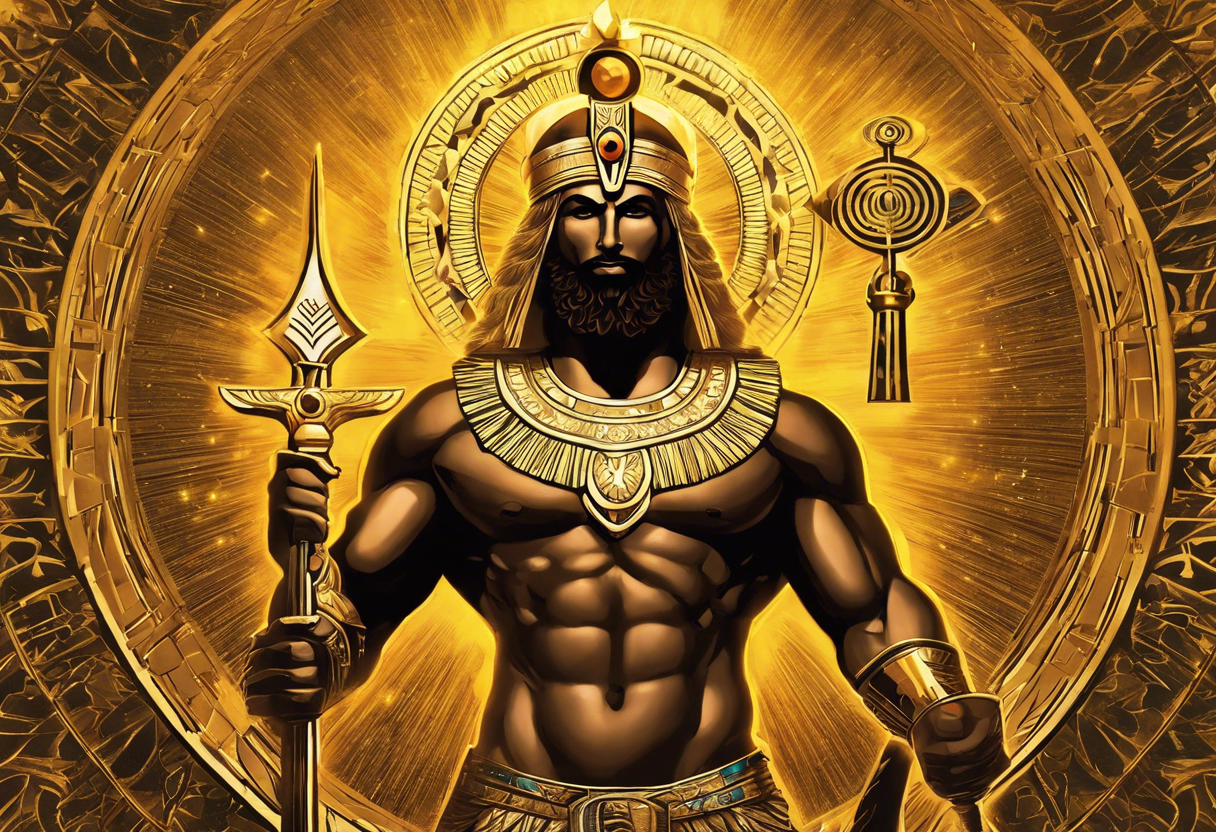
Ra, the mighty Sun God, held a prominent place in ancient Egyptian mythology. He was considered the ruler of the heavens and the creator of all life. Ra was depicted as a falcon-headed man or sometimes as a man with a falcon perched on his head, representing his association with the sun.
As the Sun God, Ra was believed to travel across the sky during the day, bringing warmth, light, and life to the world. His journey symbolized the cycle of sunrise and sunset, birth and death, and was essential for the sustenance of all living beings. The sun was seen as the source of vitality and healing, and Ra embodied these qualities.
Ra was not only a powerful deity but also an important figure in the political and religious life of ancient Egypt. He was often depicted wearing the double crown, which represented his rulership over both Upper and Lower Egypt. Many pharaohs claimed descent from Ra, emphasizing their divine right to rule.
The Egyptian creation myth tells us that Ra emerged from the primordial waters of chaos at the beginning of time. He brought order and created the world, establishing the natural laws that govern it. Ra was often associated with other deities, such as Atum, the first god in the Ennead, and Osiris, the god of the afterlife.
Ra's role extended beyond the heavens and the earth. He was also believed to govern the underworld during the night, where souls traversed after death. In this realm, he acted as the judge, determining the fate of the deceased based on their actions in life. The idea of justice and the ultimate judgment by Ra brought a sense of moral accountability to the Egyptian people.
The worship of Ra was widespread throughout ancient Egypt, and his temples were some of the grandest in the land. The famous Temple of Amun-Ra at Karnak in Thebes was one of the largest religious structures ever built. Here, priests conducted elaborate rituals and ceremonies to honor the Sun God and seek his blessings.
Despite his central role in Egyptian mythology, Ra's influence waned over time as other deities gained popularity. He merged with other solar gods, such as Horus, to form new deities like Ra-Horakhty. This fusion reflected the changing religious beliefs and the desire to incorporate different aspects of solar worship into a unified whole.
Ra, the Sun God, left an indelible mark on Egyptian culture and religious practices. His power over the sun shaped the lives and belief systems of the ancient Egyptians and provided them with a sense of stability and order in an otherwise unpredictable world.
Osiris, the God of the Afterlife

Osiris, the god of the afterlife, played a significant role in Egyptian mythology and religion. He was considered the ruler of the underworld and judge of the deceased. As one of the most important and revered gods, Osiris held immense power and influence over the souls of the departed.
- Divine Role and Attributes
Osiris was known as the god of resurrection, rebirth, and the afterlife. He was believed to bestow immortality upon those who were deemed worthy. Egyptians believed that upon death, the soul would undergo judgment by Osiris in the Hall of Final Judgment. Osiris would weigh their heart against the feather of Ma'at, the goddess of truth and justice, to determine their fate in the afterlife.
- Mythological Legends
One of the most well-known legends concerning Osiris is the story of his tragic death and subsequent resurrection. According to the myth, Osiris was betrayed and murdered by his brother Seth, who was envious of his power. Seth dismembered Osiris' body and scattered the pieces throughout Egypt.
Osiris' grief-stricken wife, Isis, embarked on a long and arduous journey to find and reassemble his body. She successfully reassembled Osiris, and with the help of the god Thoth, brought him back to life temporarily to conceive their son Horus.
- Cult and Worship
Osiris had a widespread cult and was venerated throughout ancient Egypt. Worshippers believed in his power to grant eternal life in the afterlife. Temples dedicated to Osiris were built in various cities, with the most famous one located at Abydos.
The annual festival of Osiris, known as the "Feast of the Valley," was a significant event in ancient Egyptian religious practices. During this festival, statues of Osiris were carried in procession, and rituals were performed to honor him. The festival served as a way for the living to pay respects to their deceased ancestors and ensure their well-being in the afterlife.
- Symbolism and Iconography
Osiris was commonly depicted as a mummified figure, often wearing the atef crown, a white crown encircled by ostrich feathers. He held the crook and flail, symbols of kingship and authority. These depictions emphasized his role as the ruler of the dead and judge of the afterlife.
- Legacy
The cult of Osiris endured throughout ancient Egyptian history and had a significant influence on the belief systems and rituals surrounding death and the afterlife. The concept of judgment in the Hall of Final Judgment, with Osiris presiding, became a central aspect of Egyptian religious beliefs.
Osiris also had a lasting impact on later religions and mythologies. In Greco-Roman mythology, he was identified with the god Dionysus, symbolizing the cycle of life, death, and rebirth. The worship of Osiris extended beyond Egypt's borders, as evidenced by the inclusion of his cult in various Egyptian colonies.
In conclusion, Osiris, the god of the afterlife, held a prominent place in ancient Egyptian religion and mythology. His role as the judge of the deceased and the bestower of eternal life ensured his enduring importance in Egyptian culture and his influence on subsequent belief systems. The legends, cult, and iconography surrounding Osiris contribute to an understanding of the profound significance of the afterlife in ancient Egyptian society.
Isis, the Mother Goddess
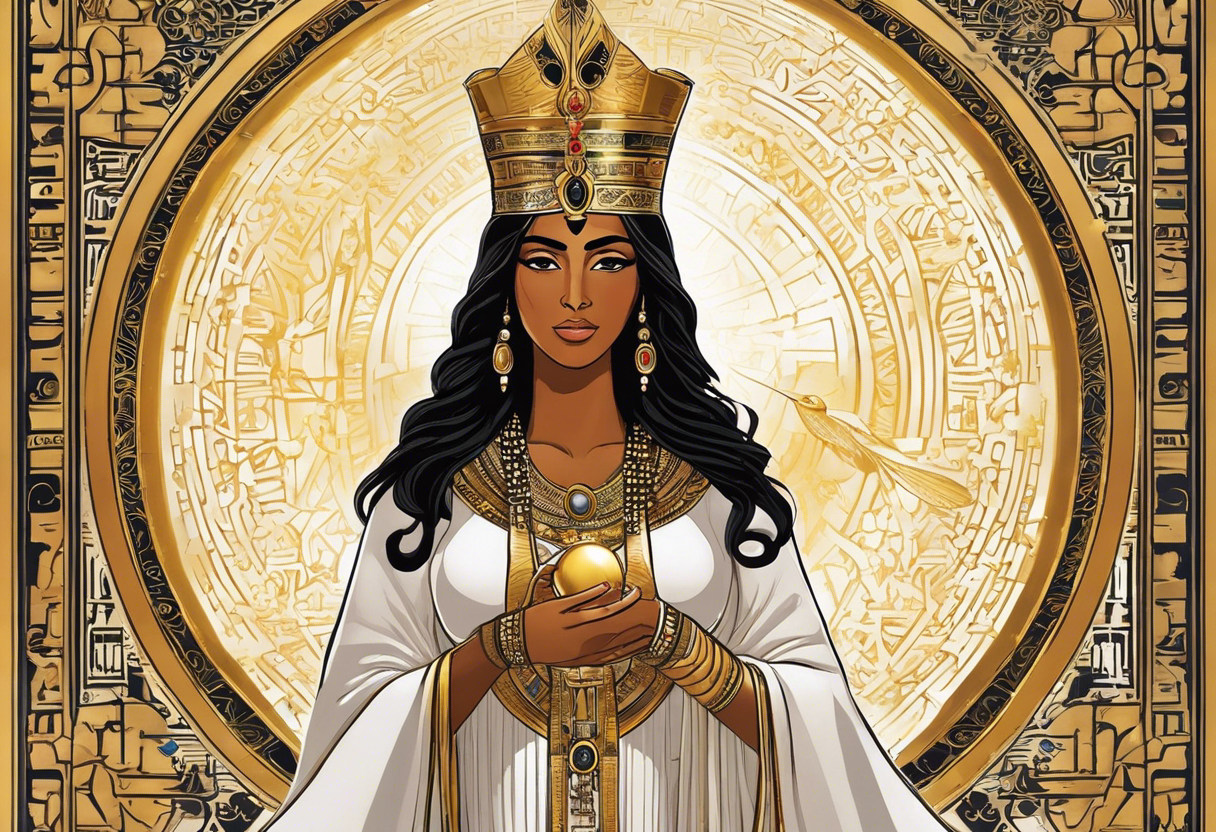
In ancient Egyptian religion, Isis was one of the most revered and powerful goddesses. She was known as the mother goddess and was associated with fertility, motherhood, and protection. Isis was worshipped as the divine mother who could provide healing, guidance, and solace to her followers.
Role of Isis
As the mother goddess, Isis played a crucial role in Egyptian mythology. She was the sister and wife of Osiris, the god of the underworld and fertility. Together, they represented the eternal cycle of life, death, and rebirth. Isis was not only the mother of the god Horus but also the protector of all pharaohs. Her role as the mother of Horus made her the maternal figure not only for the royal family but also for all Egyptians.
Symbolism and Iconography
Isis was often depicted as a beautiful woman wearing a feathered headdress or a throne-shaped crown. She was also often depicted holding the ankh, the symbol of life, in one hand and a scepter in the other. Isis was closely associated with the cow, symbolizing fertility and nurturing, as well as the throne, symbolizing her role as the divine queen and protector of pharaohs.
Legends and Myths
One of the most famous myths associated with Isis is the story of Osiris. After Osiris was murdered by his brother Set, Isis searched tirelessly for his body and eventually restored him to life. This myth symbolizes the power of Isis as the bringer of life and resurrection. Another well-known myth portrays Isis as a cunning magician who used her powers to protect her son Horus and ensure his rightful inheritance to the throne of Egypt.
Worship and Cult of Isis
Isis had a widespread cult following throughout ancient Egypt and beyond. Her worship extended into the Roman Empire, where her popularity reached its peak. Devotees of Isis believed in her ability to heal the sick, protect sailors, and assist in matters of love and fertility. Temples dedicated to Isis were centers of religious and social life. The rituals associated with her worship included offerings, prayers, and festivals celebrated in her honor.
Isis, the mother goddess, held significant power and influence in ancient Egyptian culture. Her role as the divine mother and protector made her a beloved and revered figure. Today, she continues to captivate the imaginations of people seeking her guidance and solace.
Horus, the Sky God
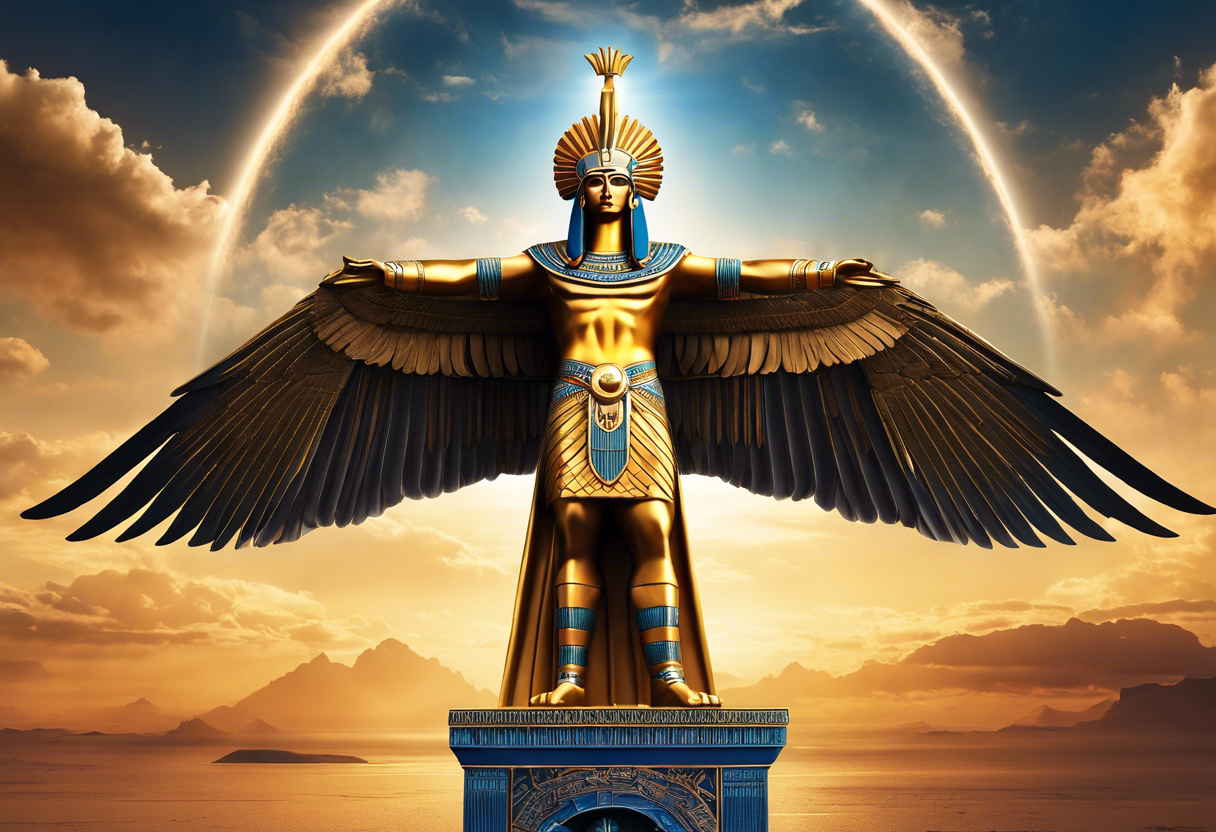
Horus is one of the most prominent deities in ancient Egyptian mythology, revered as the god of the sky. With his falcon-headed appearance, Horus was often depicted wearing the Double Crown of Upper and Lower Egypt, symbolizing his role as the protector and ruler of the entire kingdom. As the son of Osiris and Isis, he also held significant status as the divine heir to the throne.
Origins and Symbolism
The origins of Horus can be traced back to the earliest periods of Egyptian civilization, with references to him appearing as early as the Predynastic Period. Horus was believed to have been born from the union of Osiris and Isis, representing the perpetual cycle of life, death, and rebirth. His falcon form symbolized his connection to the heavens, where he was believed to soar above as the lord of the skies.
Roles and Responsibilities
Horus played a crucial role in Egyptian religion and society, serving not only as the guardian of the pharaohs but also as the patron god of kingship. It was believed that the ruling pharaoh was the earthly embodiment of Horus, further consolidating the divine authority bestowed upon him. As the patron god of kingship, Horus was responsible for ensuring the prosperity, stability, and protection of the kingdom.
Legends and Mythology
Horus is central to several myths and legends that shed light on his importance in Egyptian mythology. One of the most famous tales is the conflict between Horus and his uncle Set, the god of chaos and darkness. This myth narrates the battle between the rightful heir, Horus, and Set, who had murdered his father, Osiris, in a bid for power. The struggle lasted for many years, with Horus eventually emerging victorious and reclaiming his birthright as the ruler of Egypt.
Worship and Legacy
Horus was widely worshipped in ancient Egypt, with temples dedicated to him across the land. His cult followers believed in his ability to bestow protection, fertility, and guidance, making him a popular deity among both nobles and common people. Even after the decline of ancient Egyptian civilization, the influence of Horus continued to resonate, and his imagery can still be found in modern depictions of falcons and falcon-headed deities.
Influence and Significance
Horus's legacy surpasses the boundaries of Egyptian mythology. His symbolic representation as a majestic falcon, ruling over the skies, imbued him with qualities of strength, sovereignty, and wisdom. The idea of a divine ruler, protected by Horus, influenced the concept of divine kingship in various cultures throughout history. Horus's enduring popularity and powerful symbolism stand as a testament to the significance of this ancient Egyptian god.
Anubis, the God of Embalming
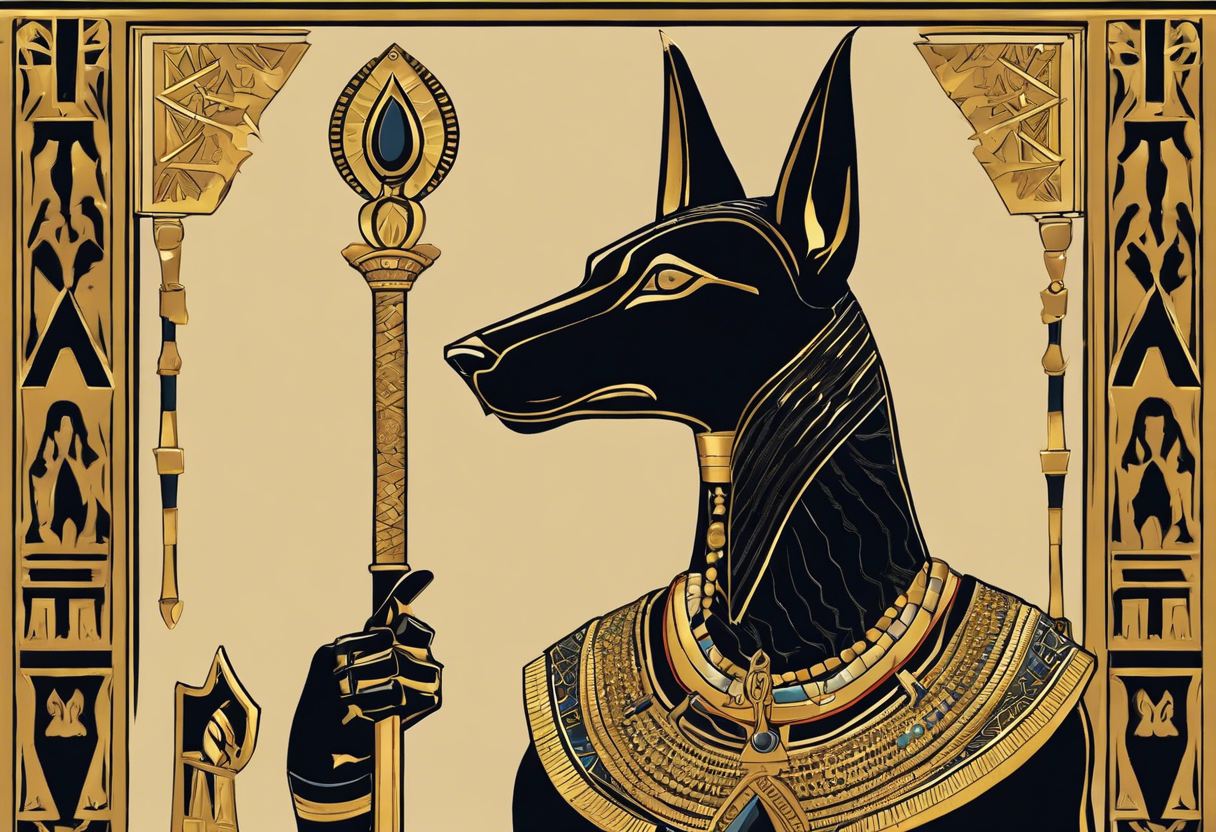
Anubis, known as the God of Embalming, holds a significant role in ancient Egyptian mythology and rituals. This powerful deity was often depicted with the head of a jackal, symbolizing his connection to the animal that scavenges on corpses. Anubis was responsible for guiding souls to the afterlife and ensuring their safe journey through the underworld.
Embalming, the preservation of the deceased, was a crucial part of Egyptian funeral customs. Anubis played a central role in this process as he was believed to oversee the embalming rituals and protect the bodies of the deceased. He was associated with mummification, the elaborate procedure that prepared the bodies for the afterlife by preserving them in a lifelike state.
According to Egyptian mythology, Anubis was the son of Osiris, the ruler of the underworld, and Nephthys, the goddess of mourning. His role as the God of Embalming stemmed from a myth about the death and resurrection of Osiris. Anubis helped his mother Nephthys in the embalming process, ensuring that Osiris was properly prepared for his journey to the afterlife.
One of the prominent stories associated with Anubis is the weighing of the heart ceremony. After a person passed away, their heart was weighed against the feather of Ma'at, the goddess of truth and justice. Anubis would oversee this judgment process, determining if the deceased would be granted entry into the eternal paradise of the afterlife or if they would face a more unfortunate fate.
Devoted believers would often offer prayers and make offerings to Anubis, requesting his assistance in the afterlife. His presence brought comfort and solace to mourners, as they believed he would safeguard the souls of their loved ones and ensure they received proper care in the afterlife.
Throughout ancient Egyptian history, Anubis remained an influential figure associated with death, embalming, and the journey to the afterlife. His role in guiding souls and preserving bodies through embalming rituals was not only a vital part of religious practices but also served as a source of comfort and reassurance for the people of ancient Egypt.
In conclusion, Anubis, the God of Embalming, played a central role in ancient Egyptian mythology and rituals. He oversaw the embalming process and guided souls through the afterlife. Believed to be the son of Osiris, Anubis held a significant place in ensuring that the deceased would receive proper care and protection in their journey to the eternal paradise. His association with death and mummification established him as a powerful and revered deity throughout ancient Egypt.
Thoth, the God of Wisdom and Writing
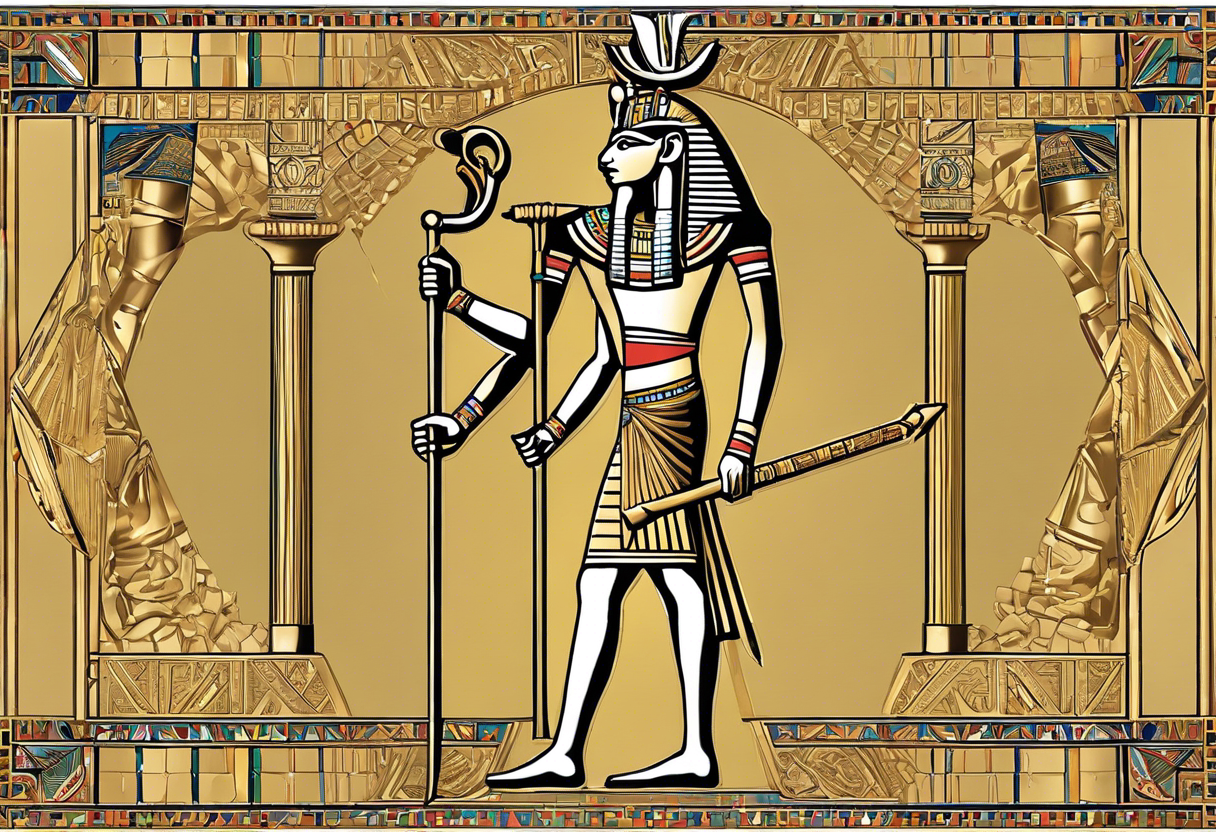
Thoth, also known as Djehuty in ancient Egyptian mythology, was one of the most revered gods in the pantheon due to his association with wisdom, writing, and the arts. As the god of wisdom, Thoth was believed to possess the knowledge of all things and was often called upon for guidance and understanding.
According to ancient Egyptian belief, Thoth played a vital role in the creation of the world. It was believed that he helped the sun god, Ra, in the process of creation by giving words to his thoughts and forming them into powerful spells. Thoth was therefore seen as the scribe of the gods, the one who recorded and protected all divine knowledge.
Being the god of writing, Thoth was often depicted with a writing palette and reed pen, symbolizing his role as the inventor of hieroglyphs, the ancient Egyptian writing system. It was through Thoth's gift of writing that humans were able to communicate with the gods and pass down their stories and knowledge through generations.
Not only was Thoth the god of wisdom and writing, but he also had expertise in a variety of other fields. He was believed to be the patron of physicians and healers, as well as the god of mathematics, astronomy, and science. Thoth was seen as the forerunner of rational thinking and logical understanding, providing a framework for scientific exploration and discovery.
Thoth was often depicted as a man with the head of an ibis or as a baboon, representing his association with wisdom and knowledge. The ibis was considered a symbol of wisdom and intelligence, while the baboon was associated with the moon and the arts.
Throughout ancient Egyptian history, Thoth was widely revered and his worship was prevalent across the kingdom. Temples dedicated to Thoth were constructed in various cities, with the most famous one located in the city of Hermopolis. Here, priests conducted rituals and ceremonies to honor the god, seeking his guidance and protection.
In summary, Thoth, the god of wisdom and writing, held a significant place in ancient Egyptian mythology. His association with knowledge, creativity, and rational thinking made him a revered figure in the pantheon. Through his role as the scribe of the gods and the inventor of writing, Thoth enabled the communication between humans and divine beings, ensuring the preservation of knowledge for future generations.
Bastet, the Goddess of Home and Family
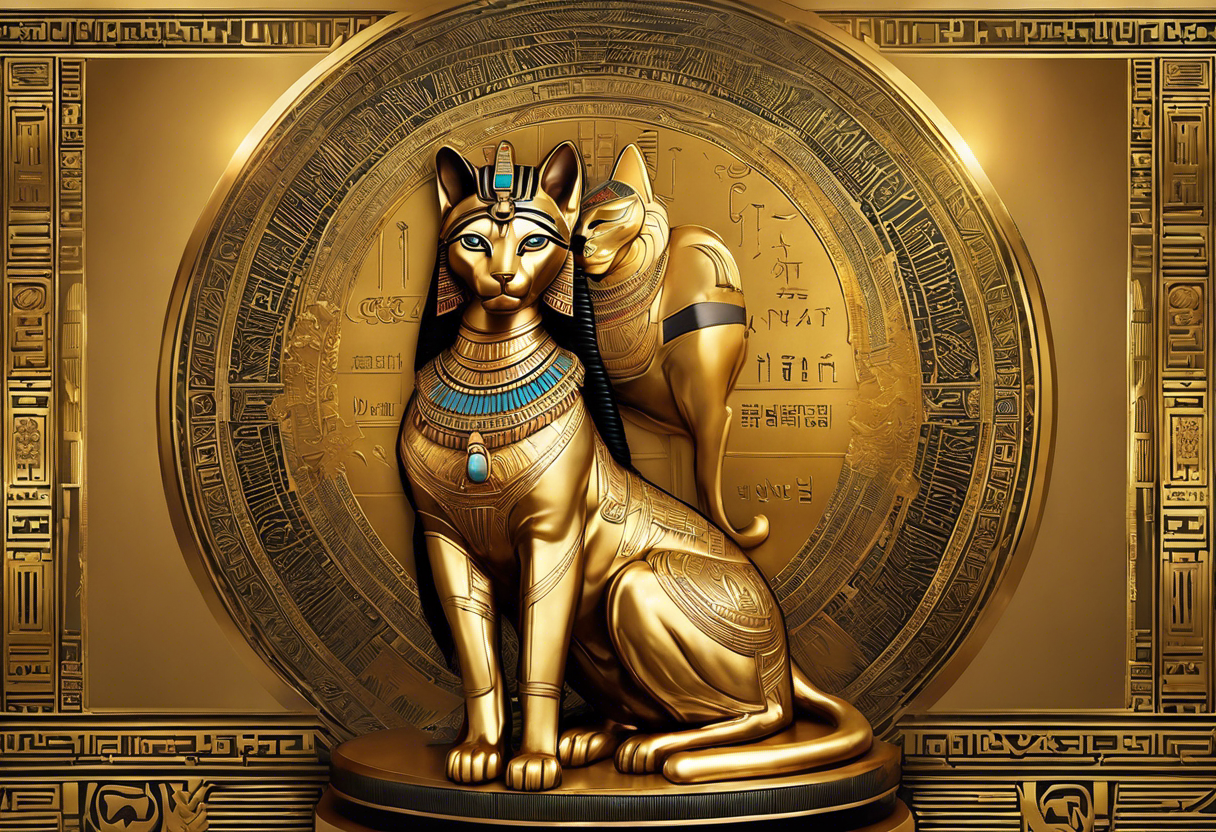
In Ancient Egyptian mythology, Bastet, also known as Bast, was a revered goddess associated with home and family. She was often depicted as a lioness or a woman with the head of a lioness. Her name derived from the ancient Egyptian word "bas," which means "to devour" or "to tear apart," symbolizing her protective nature.
Bastet was primarily worshipped as a goddess of domesticity, fertility, and motherhood. She was believed to be the guardian of the home, ensuring its prosperity and harmony. People sought her blessings for a peaceful and loving household, safe pregnancies, and abundant crops. As the patroness of mothers, she was also believed to watch over children and bless them with good health and happiness.
One of Bastet's notable roles was as a protector against evil spirits and dangerous forces. It was believed that she could ward off malevolent beings and bring about peace and order in both the physical and spiritual realms. This made her a symbol of security and stability, making her an essential deity for the overall well-being of the community.
Bastet was often portrayed with a sistrum, a musical instrument known for its protective powers. The sound of the sistrum was believed to scare away evil spirits and bring about blessings. Additionally, she was sometimes depicted holding the ankh, the symbol of life, representing her connection with fertility and renewal.
Throughout Egyptian history, Bastet's cult grew in popularity, and her worshippers established temples dedicated to her. One of the most famous temples was the Temple of Bastet in the city of Bubastis. This temple served as a pilgrimage site, with people from different regions traveling to seek her blessings and participate in festivals held in her honor.
Bastet's legendary story is closely linked with the powerful deity, Ra, the sun god. According to one myth, Ra, in his form of a lion, fought and defeated the Chaos serpent Apep every night to ensure the safety of the sun and the world. Bastet, as a lioness goddess, was closely associated with this battle and was considered a fierce ally of Ra in his fight against chaos.
In conclusion, Bastet played a crucial role in Egyptian mythology as the goddess of home and family. Her protective nature safeguarded households, looked after children, and ensured the overall well-being of the community. She was a symbol of peace, stability, and fertility, and her worshippers sought her blessings for a harmonious existence. The Temple of Bastet stood as a testament to her popularity and influence, attracting pilgrims from far and wide.
Set, the God of Chaos
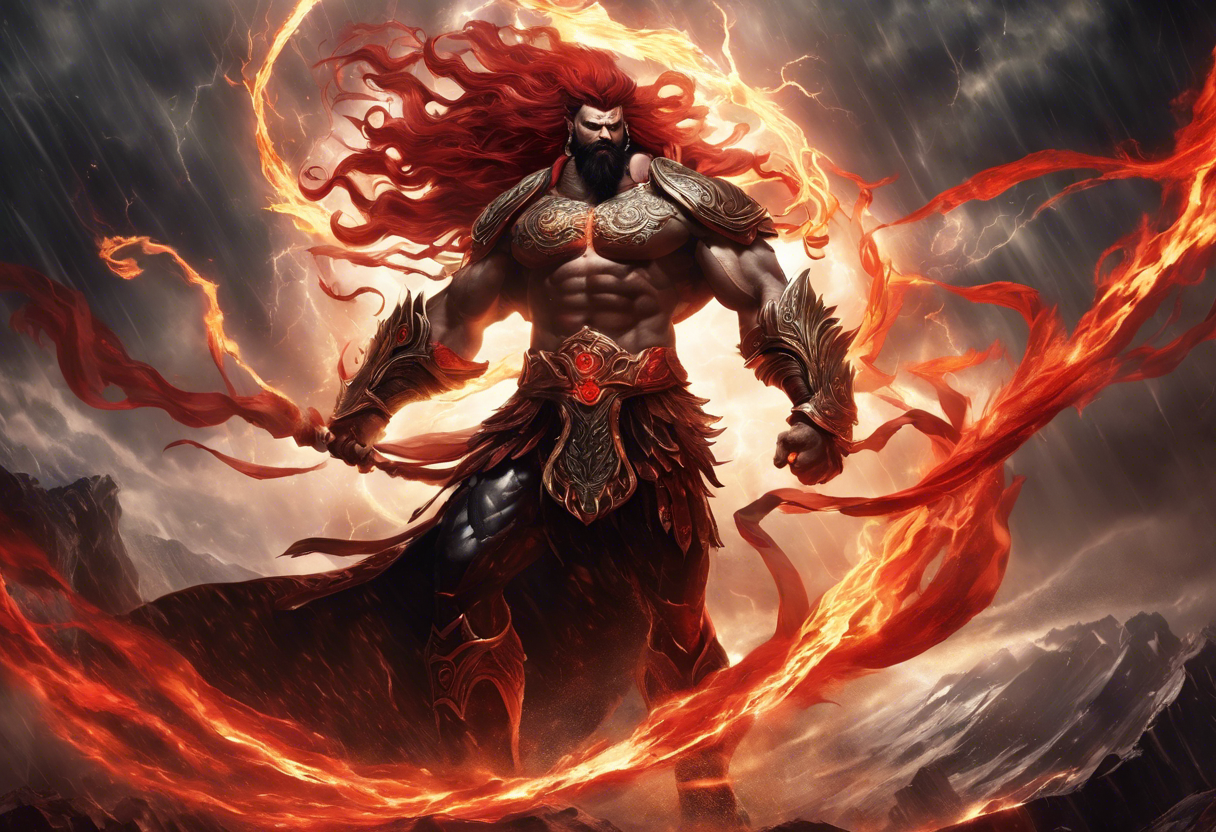
In Egyptian mythology, Set, also known as Seth or Setekh, is one of the most intriguing and complex deities. He is often depicted as a mysterious and powerful figure, associated with turmoil, storms, and chaos. Set's role in Egyptian mythology can be both revered and feared, as he represents the unpredictable and destructive forces of nature.
Origins and Attributes: Set is believed to be one of the oldest Egyptian gods, dating back to the predynastic period. He is often depicted as a creature with the body of a man and the head of an enigmatic animal, usually identified as an unknown species or a blend of multiple creatures. The specific animal he is depicted as has varied over time, including a fantastical creature with an elongated snout and sharp ears. This unique representation symbolizes his connection to the untamed and uncontrollable aspects of the natural world.
Role and Associations: Set's role in Egyptian mythology is multifaceted and often contradictory. He is a divine trickster and a force of chaos, capable of disrupting the order and balance of the universe. As the god of storms, he is associated with thunder, lightning, and fierce winds. Set is also believed to govern challenging landscapes such as deserts and rocky terrains, making him a patron of adventurers and explorers.
Conflicts and Legends: Set is most notably known for his conflicts with his brother Osiris and nephew Horus. According to mythology, Set killed his brother and tore his body into pieces, scattering them across Egypt. This act of violence represented the struggle between order and chaos, as well as the eternal battle between good and evil. Set's actions led to a prolonged conflict with Horus, Osiris' son, who sought revenge for his father's murder. This ongoing conflict between Horus and Set symbolizes the perpetual struggle between order and chaos in the world.
Worship and Symbolism: Set was both worshiped and feared by the ancient Egyptians. As a deity associated with unpredictable and destructive forces, his worship was often intertwined with rituals intended to seek his favor or appease his wrath. Despite his association with chaos, Set was also seen as a protector against evil forces and a guardian of the divine order. His image was depicted on amulets and other protective objects to ward off malevolent spirits.
Legacy and Interpretation: Set's cultural significance extended far beyond ancient Egypt. In later periods, his image and symbolism were often assimilated into other belief systems, such as the Hellenistic era's Greek mythology. Set's complex nature and intricate lore continue to fascinate scholars and enthusiasts, as they explore the nuanced interplay between chaos and order in ancient Egyptian cosmology.
Overall, the god Set stands as a powerful and enigmatic figure in Egyptian mythology, embodying both destructive forces and protective qualities. He represents the inherent struggle between order and chaos, reminding us of the delicate balance necessary for the smooth functioning of the universe.
Conclusion

In conclusion, the study of Egyptian mythology provides us with a fascinating insight into the belief system and culture of the ancient Egyptians. The gods played a central role in their daily lives, with each deity fulfilling specific responsibilities and embodying different aspects of the natural and supernatural world.
Amun-Ra, the king of gods, represented the crucial connection between the sun and life-giving forces. He was worshipped throughout Egypt and was considered to be the most powerful deity. Likewise, Osiris, the god of the afterlife, symbolized resurrection and eternal life, providing solace and hope to the Egyptians in the face of death.
The goddess Isis, known as the great healer and protector, was highly revered and played a prominent role in numerous myths. She offered assistance to those in need, granted fertility, and ensured the well-being of her followers. On the other hand, Set, the god of chaos and disorder, represented the destructive forces that threatened the harmony of the world.
Thoth, the god of wisdom and writing, was responsible for maintaining the cosmic balance by recording and preserving knowledge. His influence extended beyond the realm of gods, as he also served the role of a mediator and counselor for humans.
Furthermore, Hathor, the goddess of love, joy, and beauty, was celebrated for her nurturing qualities and bringing pleasure and happiness to people's lives. Finally, Anubis, the god of embalming and mummification, guided souls to the afterlife, ensuring a successful transition to the realm of the dead.
The roles and legends of these powerful Egyptian gods intertwine with one another, reflecting the complex and interconnected nature of Egyptian mythology. Through their stories, the ancient Egyptians sought to explain the natural world, understand the human condition, and find meaning in the cycle of life and death.
The enduring influence of these gods is evident in the numerous temples and artifacts dedicated to their worship that have survived to this day. As we delve deeper into their roles and legends, we gain a deeper appreciation for the rich and vibrant culture that flourished along the banks of the Nile River. The study of Egyptian mythology allows us to connect with our ancient ancestors and understand the beliefs and values that shaped their lives.

